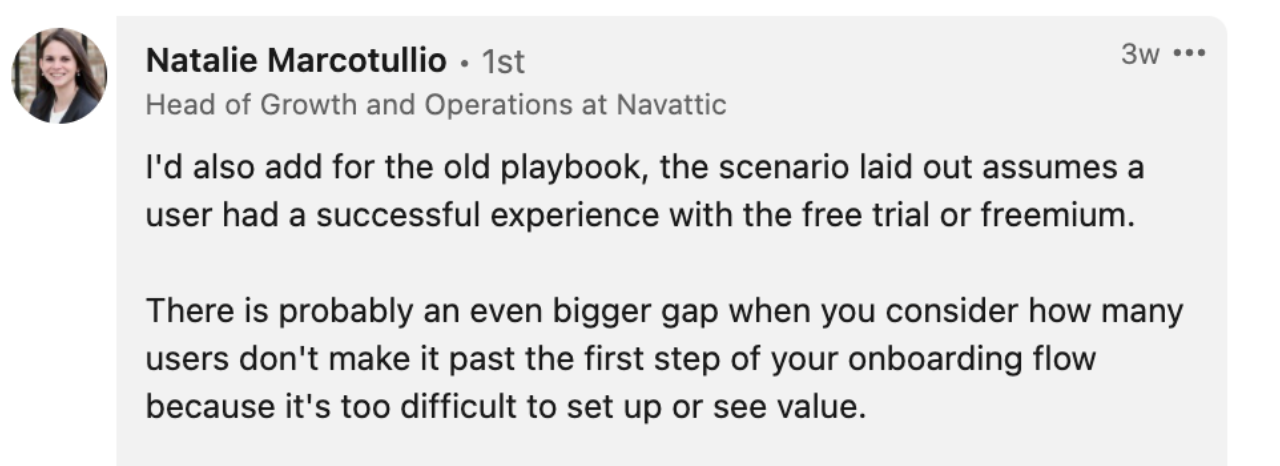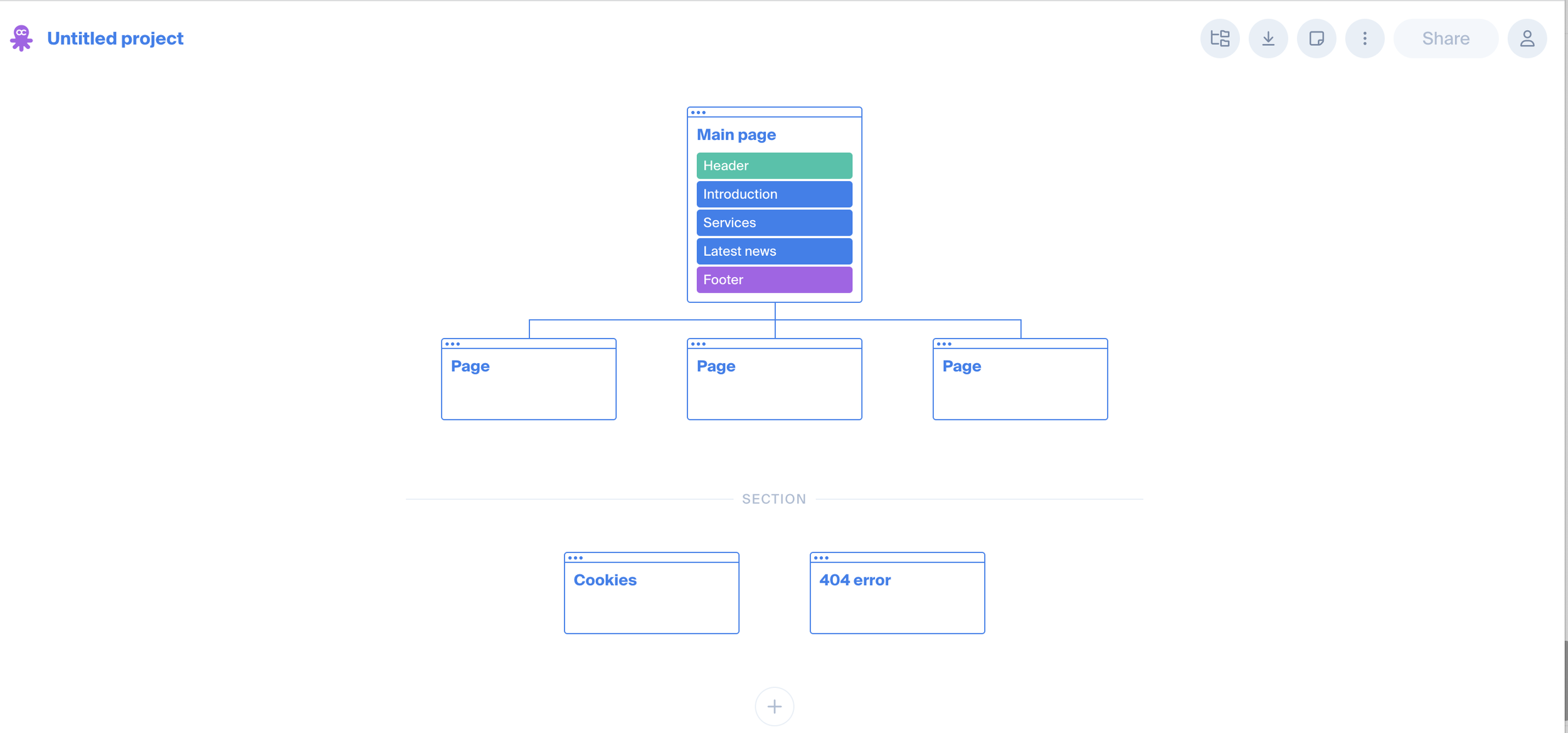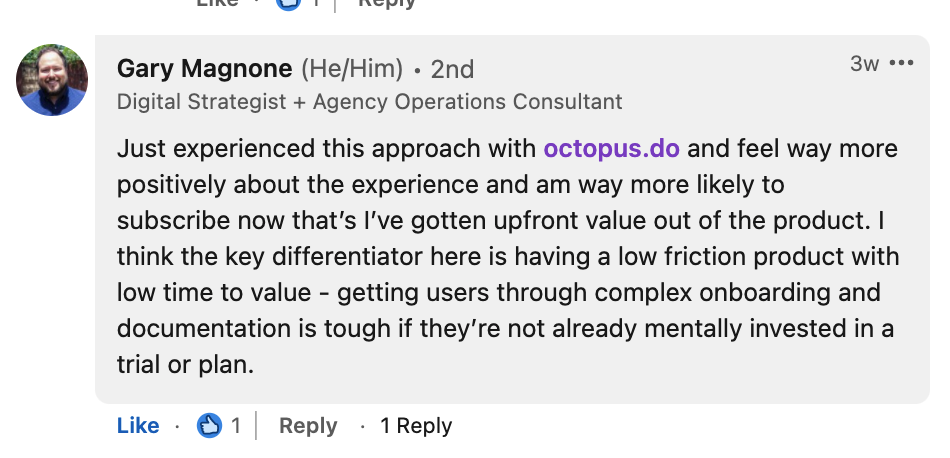Why ungated product experiences are the future of PLG
Most SaaS brands are constantly thinking about how to make their products more usable and accessible.
Because that's what today’s buyers want. They want to be able to explore, use, and understand the value of a product - before they're asked to pay.
Essentially, to try before they buy.
That's why product-led growth has become such a popular go-to market model (and buzzword) over the last few years - and why we’re seeing so many companies offering free trials or freemium plans. Users want to have control over the experience - not be sold to.
Because it’s effective.
But what if you could go further? Remove more friction. Make your product more accessible. And get it in front of an even larger audience?
We're seeing a new & exciting playbook emerge in PLG
I think it's the future of how people will buy saas software. It's all about leading with product value - not gating it.
In this post, I'll explain this new plg playbook and why I’m so excited about it.
But first, let’s start with the previous PLG playbook, which is all about using your product as the main tool to acquire, convert, and upgrade customers.
The previous PLG playbook was pretty straightforward for SaaS brands:
Make a frictionless version of the product users can try (typically free plan or free trial).
Allow website visitors to sign up for this frictionless free plan/ free trial, directly from your website.
Optimize the new user experience to deliver as much value to new users as possible.
Create incentives for free users to convert to paying customers.
Implement paths to move users between plans and drive upgrades.
This playbook is a great way to acquire and convert users. That’s why we’ve seen the product-led model explode over the past few years. The model is effective… but it’s not perfect.
The crux of product-led growth is getting new users to activate. Helping new users reach that "aha" moment that makes them come back for more.
Activated accounts tends to be the north star metric for many PLG saas brands. It’s a good way to understand if an account has received value inside your product - and typically an indication if they’re likely to become active users & eventually customers down the line.
With this playbook - users can't experience the true value of your product without signing up for it first. And that's a problem—because most SaaS websites only convert 2-4% of their visitors into new accounts.
That means 96-98% of SaaS website visitors don't sign up - and don’t get to experience the value of the product. And even for the 2-4% of users that do sign up, it doesn’t mean they’ll automatically have a successful experience.
I posted on Linkedin about this a few weeks ago, and Natalie Marcotullio made a great point 👇
She’s right, the drop-off is huge. In my experience, 25-35% of new accounts sign up. Poke around for a few mins. Then leave, and never come back. Essentially getting zero value from your product. Definitely not making it to the activation moment.
We’re seeing innovative SaaS companies adopt a new playbook
They're not gating product value behind a sign-up form anymore. Instead, they're leading with value and embedding an interactive version of their product directly on their site.
Their playbook looks like this:
Make a frictionless version of the product users can try (typically free plan or free trial).
Embed a (ungated) interactive version directly on the site, so visitors can play with it, and get a feel for how valuable it might be for them - no form fields required.
After some meaningful interaction (maybe using it for a few mins - or a specific number of interactions) you suggest they try out the real version.
The new playbook engages a much larger percentage of your website visitors. Essentially starting the onboarding process before any forms.
When visitors do sign up, they’ve already received a ton of value from the product. They’re way more likely to become active users & paying customers.
This playbook is good for visitors. Good for your brand. And good for your conversion rates.
I'm seeing example after example of companies doing this with lots of success.
Want to see what I mean? Check out Unbounce. The screenshot below is an interactive page on their website. Essentially a lightweight version of their product.
Unbounce could have adopted the traditional SaaS playbook. Making you create an account before seeing how their tool works. But instead, they embedded the tool directly on their site so you can play with it before even thinking about signing up.
You can adjust copy, change form fields, move this around the page, and upload images - all directly on the website page.
Video editing tool, Veed takes a similar approach. They don't make you create an account to get started. They lead with the interactive experience and encourage website visitors to try out the tool immediately.
The main CTA on their homepage is to Upload Your Video, and specifically calls out to “try it now, no account required”.
After clicking upload, you immediately begin using the product!
They prompt you to upload a video and you’re immediately able to use their editor. You can add filters and change the speed of your clips, add text and subtitles, watermarks and logos, and even draw on the screen - all without being asked to pay for anything or create an account.
On the top of the page, there’s a subtle prompt to “save you project for later”, which leads you into their signup form. But it’s not required to use the product. They’re delivering a lot of value - very quickly.
Octopus is another great example of this new playbook in action. They help companies create visual sitemaps.
Check out their homepage. It doesn’t talk about the product - or have a CTA to TRY the product. It IS the product.
So, when users land on their site, they see exactly what it does. How it looks. How it works, and get a feel for whether or not it suits their needs. It takes about 3 seconds to get started using the product.
They allow website visitors to build their own custom site map directly on their homepage. And when you’re ready, that little save button on the bottom of the screen brings you into their signup flow.
It looks pretty slick to me. More importantly, it seems to be resonating with their users, like Gary Magnone.
Instead of just marketing the product. The product is now a core piece of the marketing.
And that’s a big change for most business - in a good way.
This new playbook engages way more people, and gives them a better experience. That means. That means more experience value. More convert to your paid plans. And more become will advocates.
How to get started
Now it would be nice if everyone could make and embed a lightweight version of their product on their website. If you do have the engineering resources to create this type of experience, it’s definitely worth it.
But for many SaaS brands, engineering resources and product constraints might make that hard. Or, you might just want to validate this concept provides value for your brand - before investing too many resources into it.
If that's the case for you, there are some great no-code tool options (like Navattic) to help you get started. Going the no-code route gives you the ability to build interactive product demos and embed them directly on your site - without dev help.
They key to PLG making sure as many people get to experience the value as possible. Once they do, it dramatically increases the likelihood they become an active user, and eventually a paying customer.
This new playbook dramatically increases the number of people who get to experience that value.
We're still in the very early stages of this playbook shift. But it’s happening in real time. I think ungated product experiences are the future of product-led growth.
I suspect we'll see see the words “try it now, no account required” on a lot more saas websites over the next few years.






